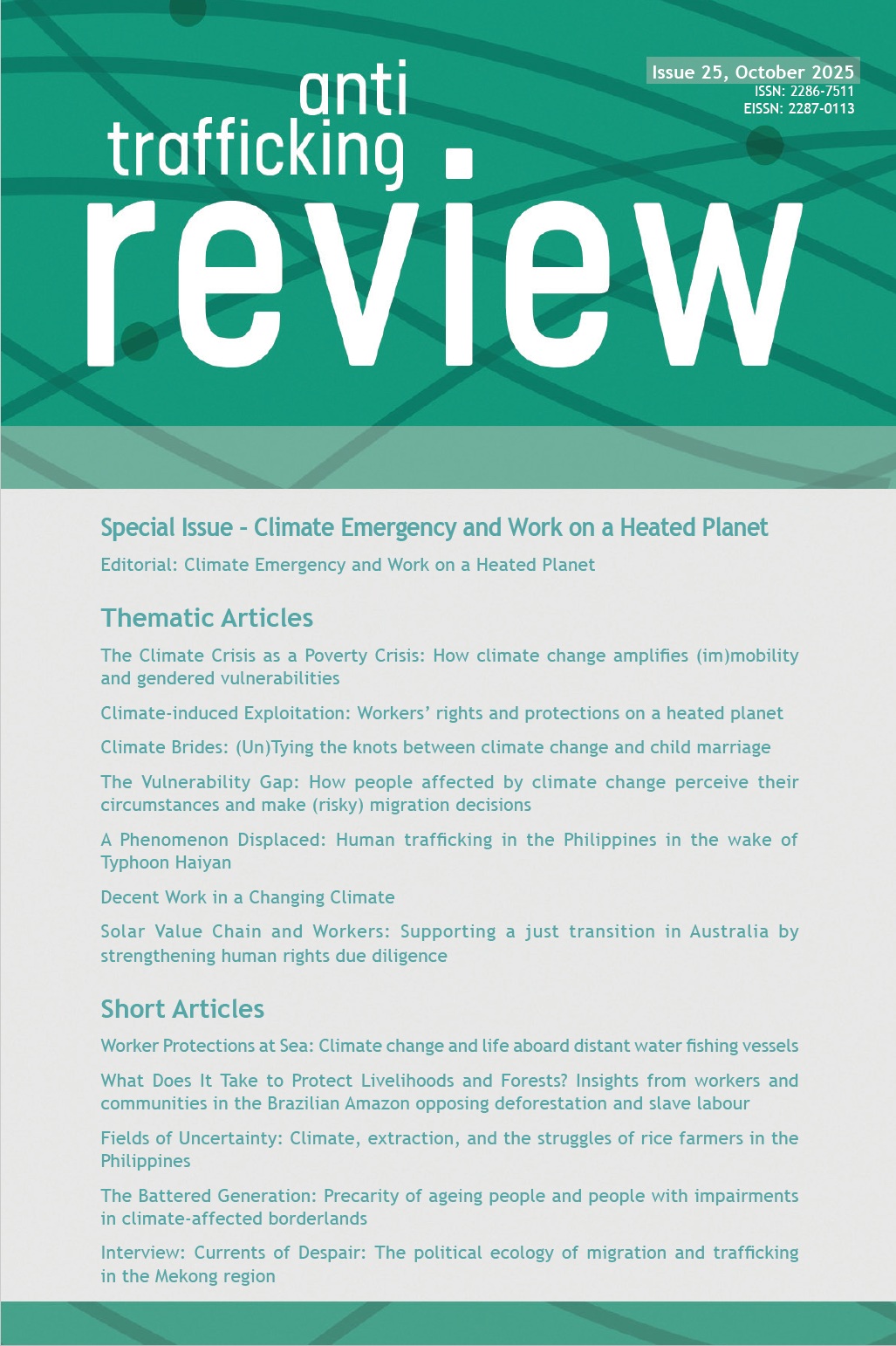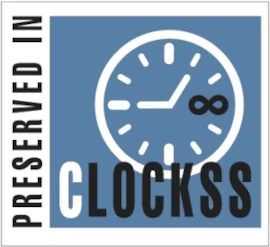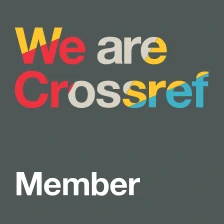Climate Brides: (Un)Tying the knots between climate change and child marriage
DOI:
https://doi.org/10.14197/atr.201225254Keywords:
climate change, child marriage, displacement, economic precarity, climate brides, marriage of survivalAbstract
Although both climate change and child marriage have received sustained policy and research attention, their intersection remains critically underexplored. This article examines how climate stress—arising from rapid-onset disasters and slow-onset processes such as drought and salinisation, and intensified by displacement and weak governance—reshapes marriage practices in South Asia, where climate vulnerability and gendered precarity converge with particular intensity. Drawing on ethnographic research in drought-affected western India and case studies from the Indo-Bangladesh border, southern India, and Afghanistan documented through the Climate Brides project, the paper traces how child marriage functions as an infrastructure of adaptation—a mechanism for redistributing labour, debt, and care under conditions of crisis. Across cases—from Gate-Cane weddings in Maharashtra to trafficking-linked unions in the Sundarbans, post-tsunami marriages in Tamil Nadu, and Toyana exchanges in Afghan displacement camps—early and forced marriage emerge not as cultural residues but as adaptive, if extractive, responses to livelihood erosion and the retreat of state support. Using feminist political ecology and social reproduction theory, the article calls for interdisciplinary, justice-oriented approaches that recognise child marriage as part of the gendered infrastructures of climate adaptation.
Metrics
Published
How to Cite
Issue
Section
License
Copyright (c) 2025 Anti-Trafficking Review

This work is licensed under a Creative Commons Attribution 4.0 International License.
The Anti-Trafficking Review has a policy of licensing under the Creative Commons Attribution License (CC-BY). Under the CC-BY license, the public is free to share, adapt, and make commercial use of the work. To protect our work and that of our authors, however, users must always give proper attribution to the author(s) and the Anti-Trafficking Review (i.e. with a complete bibliographic citation and link to the Anti-Trafficking Review website and/or DOI).
The Anti-Trafficking Review promotes the sharing of information, and we therefore encourage the reproduction and onward dissemination of articles published with us.








